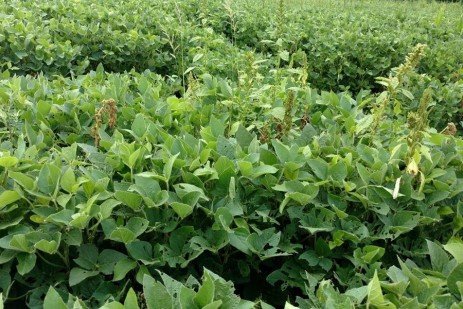From Dwight Lingenfelter, Extension Associate, Weed Science

As the growing season progresses, crops are growing rapidly. As a reminder, many herbicides have application restrictions related to the crop stage of growth, as well as if the crop is being harvested for silage, forage, grazing or grain. Here are a few things to consider.
Post applications
Many corn and soybean crops are getting beyond the growth stage for a legal post herbicide application. Some corn herbicides can be applied up to corn that is 48 inches tall but with the use of drop nozzles; see Table 2.15 in the 2019 Mid-Atlantic Field Crop Weed Management Guide. While many of the typical soybean post herbicides need to be applied prior to flowering. Don’t confuse late post applications and harvest aid applications. Not all herbicides can be applied up to harvest. There are only several herbicides that can be applied as a harvest aid (e.g., 2,4-D, dicamba, glyphosate, Gramoxone, Aim and a few others) and these must be sprayed within a certain time period when the crop is mature and ready to harvest.
Harvest intervals
A number of herbicides have restrictions when harvesting corn or soybean for silage or forage. Harvest restrictions are based on the potential for illegal herbicide residues in the feed or forage. Although not generally a problem, early-harvested corn may fall under some of these restrictions. Some pre-corn herbicides such as atrazine, Acuron, Anthem and Sharpen have intervals from 60–90 days, while others pre herbicides can be less than 45 days. For example, post-applied products such as Steadfast Q and Resolve Q have a 30-day, Status a 32-day, Liberty a 70-day, Roundup a 50-day and Impact/Armezon a 45-day harvest restriction for silage following herbicide application; see Table 2.18 in the 2019 Mid-Atlantic Field Crop Weed Management Guide. Many of the pre- and post-applied soybean herbicides are not labeled for soybean forage but some that do include: BroadAxe/Authority Elite (30 days), Boundary and metribuzin (40 days), FirstRate (25 days) and Liberty (45 days). Fortunately, in-crop applications of Roundup have only a 14-day harvest restriction, while other glyphosate products may vary regarding their harvest restrictions; see Table 4.16 in the 2019 Mid-Atlantic Field Crop Weed Management Guide.
Crop rotation
Herbicide labels also restrict when rotational crops may be planted. Recrop restrictions may be based on either potential crop injury from herbicide residues in soil or the potential for illegal pesticide residues in the rotational crop. Rotation restrictions range from none to at least 26 months, so be sure to check a current herbicide label or other reliable information source before planting a rotational crop this late summer or fall. Most atrazine containing treatments have at least a 10-month restriction before planting small grains. You can find recrop information on the herbicide labels and in the 2019-20 Penn State Agronomy Guide or the 2019 Mid-Atlantic Field Crop Weed Management Guide.






Post a comment
Report Abusive Comment